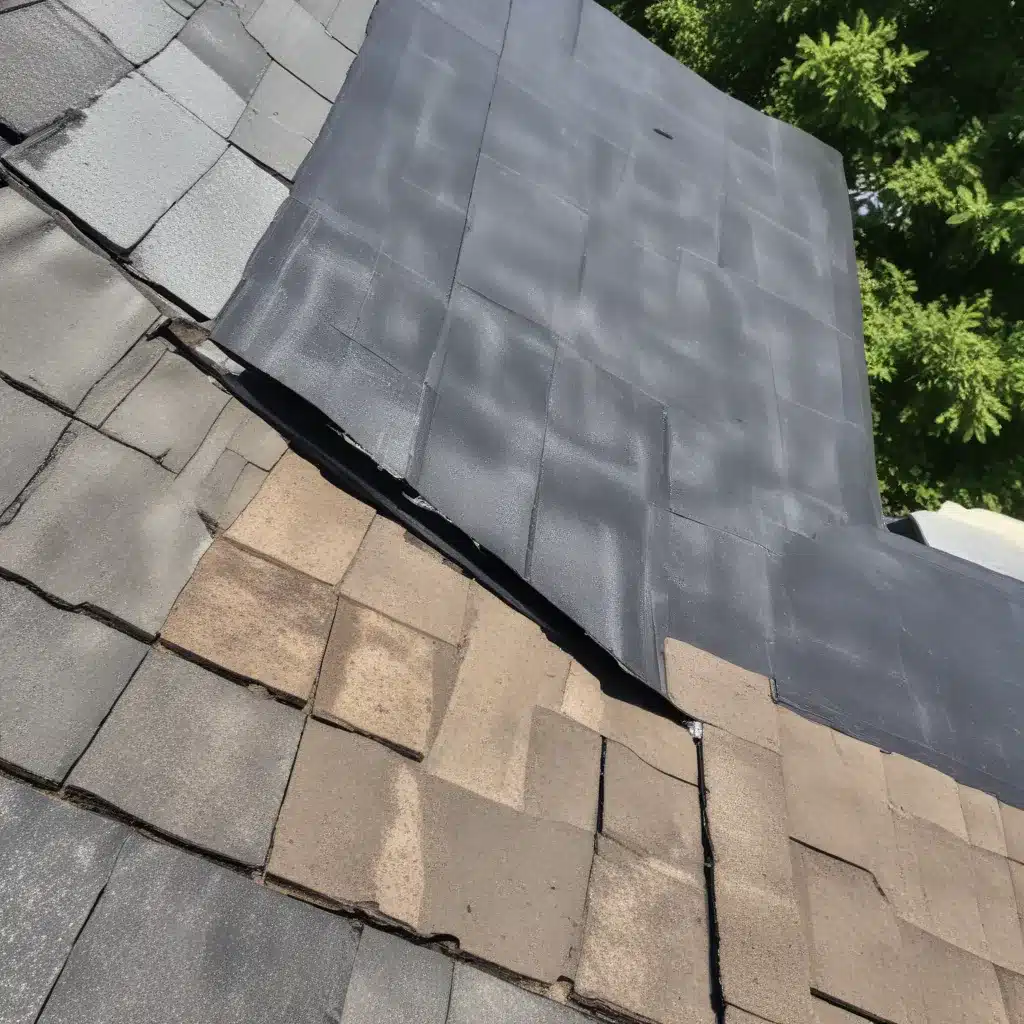
Understanding Roof Flashing and Its Role
As a seasoned roofing professional, I understand the critical importance of proper roof flashing in maintaining the integrity of a flat roofing system. Flashing is a thin, durable metal (often galvanized steel) used to direct water away from vulnerable areas of the roof, such as joints, seams, and penetrations. This essential component plays a vital role in preventing water intrusion and leaks that can cause significant damage to the building’s structure and interior.
Flat roofs, in particular, are more susceptible to flashing-related issues due to their minimal slope, which can make it challenging for water to effectively drain away. When flashing is compromised, even the tiniest opening or gap can allow water to seep into the building, leading to a host of problems, including water stains, mold growth, and structural deterioration.
Identifying Common Flashing Failure Points
One of the most common causes of flat roof leaks is the deterioration or failure of the flashing. There are several ways in which flashing can become compromised, and it’s essential for roofing professionals and building owners to be aware of these potential failure points:
Rust and Corrosion
The galvanized coating on flat roof flashing can break down over time, leaving the underlying steel vulnerable to rust and corrosion. As the metal degrades, it becomes more susceptible to cracks, holes, and eventually, complete failure.
Physical Damage
Flashing can also be damaged by physical impacts, such as falling debris, foot traffic, or extreme weather events. Even a small dent or tear in the flashing can create an entry point for water.
Improper Installation
Poorly installed flashing is a common culprit of roof leaks. If the flashing is not properly overlapped, sealed, or secured, it can lead to gaps and openings that allow water to penetrate the roof system.
Settling and Movement
As a building settles or shifts over time, the flashing can become misaligned or detached from the roofing membrane, creating opportunities for water intrusion.
Age and Wear
Like any roofing component, flashing has a finite lifespan. Over time, the metal can become brittle, crack, or lose its sealant, leading to failures and the need for replacement.
Identifying Signs of Flashing Failure
To proactively address flashing issues and prevent costly water damage, it’s essential to regularly inspect the roof and look for signs of flashing failure. Some common indicators include:
- Water Stains or Discoloration: If you notice water stains, discoloration, or mold growth on the ceiling or walls, it could be a sign of a flashing-related leak.
- Visible Damage: Carefully inspect the flashing around roof penetrations, edges, and corners for cracks, holes, rust, or other physical damage.
- Loose or Missing Flashing: If pieces of flashing are missing or have become detached from the roofing system, it leaves the underlying roof vulnerable to water intrusion.
- Damaged Sealants: Cracked, dried, or missing sealants around flashing can compromise their ability to direct water away from the roof.
Flat Roof Flashing Repair Strategies
When it comes to addressing flashing-related roof leaks, there are several repair strategies that roofing professionals can employ to restore the integrity of the roofing system:
Flashing Restoration and Sealing
In some cases, the flashing may be salvageable with proper restoration and sealing techniques. This can involve cleaning and priming the metal, applying a high-quality sealant, and reinforcing any weak spots or damaged areas.
Flashing Replacement
If the flashing is beyond repair or the roofing system is due for a full replacement, the flashing will need to be carefully removed and replaced with new, properly installed components. This is an excellent opportunity to ensure the flashing is properly integrated with the new roofing materials.
Temporary Fixes
While not a long-term solution, there are some temporary fixes that can be implemented to address minor flashing-related leaks while waiting for professional repair. These may include applying a roof sealant or tape over the affected area to stop the immediate water intrusion.
Proactive Roof Maintenance and Preventative Care
To ensure the longevity of your flat roof system and minimize the risk of flashing-related failures, it’s crucial to implement a comprehensive, proactive maintenance program. This should include:
- Regular Inspections: Schedule annual or bi-annual roof inspections to identify any potential issues with the flashing or other roofing components before they become larger problems.
- Preventative Maintenance: Address minor flashing repairs or sealant touch-ups before they have a chance to escalate into more significant leaks or damage.
- Timely Replacement: When the flashing or roofing system reaches the end of its useful life, don’t hesitate to replace it to avoid costly water intrusion and structural damage.
By staying vigilant and proactively maintaining your flat roof’s flashing, you can help extend the lifespan of your roofing system and protect your building from the costly consequences of water damage.
Partnering with Experienced Roofing Professionals
At Roofers in Northampton, we have a team of skilled and experienced roofing professionals who specialize in flat roof flashing repairs and maintenance. Our expertise in identifying and addressing flashing-related issues can help you avoid the headaches and expenses associated with water intrusion.
Whether you’re dealing with a current flashing-related leak or simply want to ensure the long-term integrity of your flat roof, we’re here to provide the tailored solutions and personalized service you need. Contact us today to schedule a free roof inspection and discuss your flat roofing needs.

